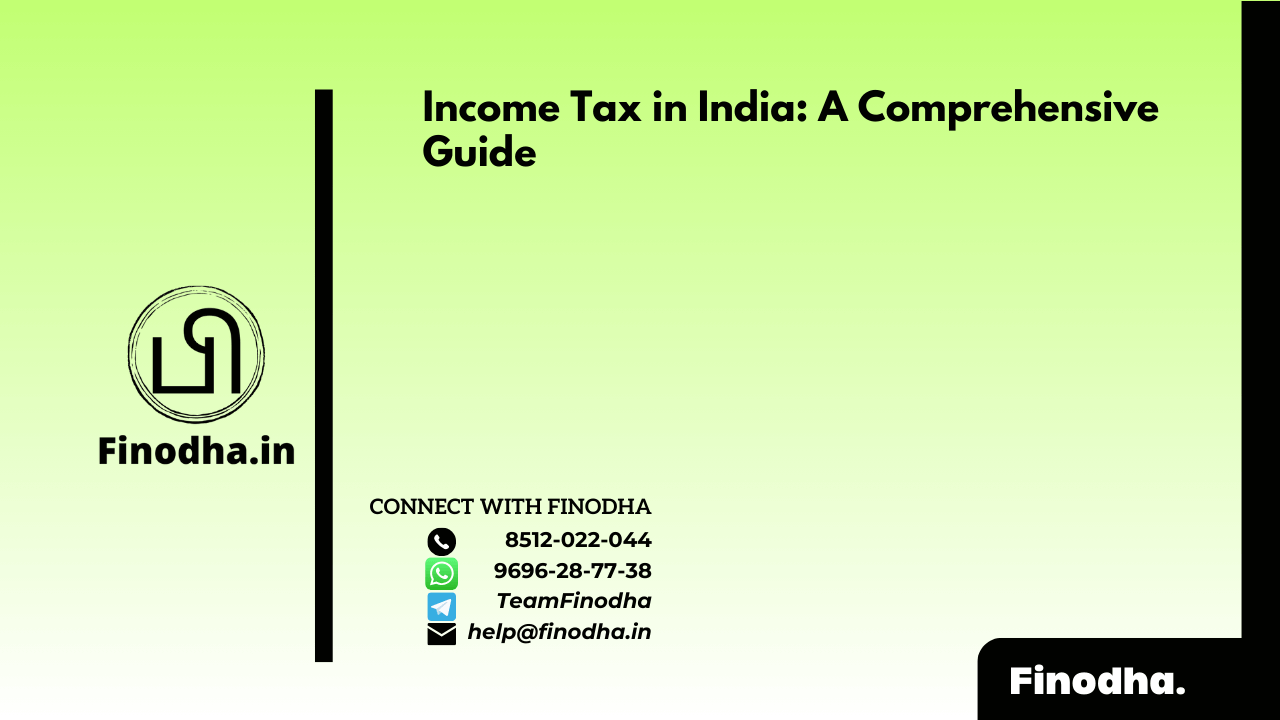Important Keyword: Goldilocks Economy, Economic Equilibrium, Low Unemployment, GDP Growth.
Table of Contents

Introduction to the Goldilocks Economy
The term “Goldilocks economy” refers to a state of economic equilibrium that is neither too hot nor too cold, hence achieving the perfect balance for sustained growth. This concept draws inspiration from the well-known children’s story of Goldilocks and the Three Bears, where Goldilocks finds the porridge, chair, and bed that are ‘just right.’ Similarly, a Goldilocks economy represents an ideal scenario in which economic growth is steady, inflation remains stable, and the unemployment rate is at a healthy level, avoiding both recessionary challenges and overheating risks.
In a Goldilocks economy, the essential elements work cohesively, creating an environment conducive to investment and spending. An effective monetary policy, supportive fiscal measures, and robust consumer confidence play crucial roles in maintaining this delicate balance. This environment fosters business expansion and innovation, leading to heightened productivity levels and, ultimately, increased standards of living. Thus, the significance of a Goldilocks economy lies in its ability to cultivate sustained growth while simultaneously minimizing adverse economic fluctuations.
It is crucial to understand that achieving this state is neither simple nor guaranteed; various global and domestic factors can influence economic dynamics. For instance, disruptions such as geopolitical conflicts, fiscal policy changes, or unexpected market shocks can jeopardize this balance. Policymakers and economists aim to create conditions that encourage a Goldilocks economy, focusing on strategies that promote growth while controlling inflationary pressures. Ultimately, the pursuit of this balance is essential for ensuring financial stability and resilience in the face of ongoing economic challenges.
What Defines a Goldilocks Economy?
A Goldilocks economy represents a state of economic equilibrium, characterized by conditions that are “just right” for growth and stability. This term originates from the fable of Goldilocks, who seeks out the perfect porridge—neither too hot nor too cold. In economic contexts, several key characteristics define this balanced environment, which can lead to sustainable prosperity.
One primary characteristic of a Goldilocks economy is low unemployment rates. When individuals seeking jobs can find suitable employment, consumer confidence rises, leading to increased spending and economic activity. For instance, a nation with an unemployment rate hovering around 4% typically signifies that job opportunities are abundant, enhancing overall productivity.
Another significant aspect is steady GDP growth. The Gross Domestic Product (GDP) measures the economic output of a country. In a Goldilocks economy, GDP growth rates remain steady, generally around 2-3%, indicating a healthy expansion without the risks of overheating or recession. For example, a country showcasing this stable growth can invest in public services and infrastructure, further propelling its economic trajectory.
Low inflation is also crucial in defining a Goldilocks economy. Inflation rates typically range between 1-3%, allowing consumers to maintain purchasing power while encouraging businesses to make long-term plans without the fear of sudden price surges. A controlled inflation environment fosters confidence among investors and consumers alike, as evidenced by various economies that manage to keep inflation in check through prudent fiscal policies.
Lastly, manageable interest rates play a pivotal role. Moderate interest rates facilitate borrowing and lending, crucial for consumer spending and business investment. A central bank that sets interest rates neither too high nor too low can inspire economic activity, striking the right balance to sustain growth. In essence, a Goldilocks economy is judged and defined by its ability to harmonize these four characteristics, creating an atmosphere conducive to financial stability.
The Borrowed Name: Understanding the Goldilocks Analogy
The term ‘Goldilocks economy’ draws its inspiration from the classic children’s story of Goldilocks and the Three Bears. In the tale, Goldilocks ventures into the bears’ home, exploring their porridge, chairs, and beds. Ultimately, she finds the perfect porridge—neither too hot nor too cold, but ‘just right.’ This metaphor extends seamlessly into the realm of economics, representing a balanced state where economic growth is stable, inflation is under control, and unemployment rates are low.
The ‘just right’ concept mirrors the ideal economic conditions desired by policymakers and economists. In a Goldilocks economy, growth is sustainable, fostering an environment in which businesses can thrive, consumers feel confident, and investments flourish. The delicate equilibrium signifies a harmonious balance that avoids the extremes of boom and bust, much like Goldilocks’ rejection of the porridge that was either too hot or too cold. This pursuit for equilibrium resonates in daily life; for instance, individuals often seek the perfect blend of work and leisure, paralleling economic stability.
Relatable anecdotes can further elucidate this analogy. Consider a family budgeting for their monthly expenses. They strive for a financial state that allows them to enjoy occasional luxuries without overspending or falling into debt. This relatable scenario showcases how the Goldilocks principle applies not just in economic theory but also in everyday decision-making. Striking a balance in budget—ensuring groceries, entertainment, and savings are accounted for—reflects the overarching themes of the Goldilocks economy. Just as Goldilocks searched for the ideal porridge, society at large continues to navigate the complexities of achieving a stable and prosperous economy, where all individuals can benefit from a ‘just right’ environment.
Key Features of a Goldilocks Economy
The concept of a Goldilocks economy refers to an optimal economic climate characterized by an ideal balance that supports sustainable growth without inflationary pressures. Below are the essential features that define a Goldilocks economy:
- Low Unemployment: A Goldilocks economy typically boasts low unemployment rates, indicating that most individuals who are willing and able to work can find employment. This situation contributes to consumer confidence, as more people have disposable income to spend. For instance, during such times, businesses often experience heightened demand for their products and services, leading to economic expansion.
- Rising Asset Prices: In a healthy Goldilocks economy, asset prices such as stocks and real estate generally appreciate. This trend reflects investor confidence and a robust consumer market. For example, rising home values can create a wealth effect, whereby homeowners feel more financially secure and are encouraged to increase their spending, further driving economic growth.
- Low Interest Rates: Central banks typically maintain low interest rates in a Goldilocks economy, promoting borrowing and investment. Low borrowing costs enable consumers to take loans for homes and businesses to expand, thereby stimulating economic activity. When interest rates are low, it translates to cheaper mortgages, encouraging home purchases and increasing demand in the housing market.
- Low Inflation: A key feature of a Goldilocks economy is low inflation, which ensures that the purchasing power of consumers remains stable. This stability is crucial for long-term planning for both consumers and businesses. A moderate inflation rate allows prices to rise gradually, which can be an indicator of healthy demand without eroding the value of money.
- Steady GDP Growth: Finally, a Goldilocks economy is characterized by steady, sustainable GDP growth, reflecting an economy that expands at a measured pace. This growth rate is often considered optimal as it leads to improved living standards without overwhelming the economy’s capacity, which could lead to boom-and-bust cycles.
Each of these key features contributes to creating a positive environment for both individuals and businesses, facilitating a balanced approach to economic growth that avoids extremes.
The Role of Government in Maintaining a Goldilocks Economy
The concept of a Goldilocks economy, characterized by stable growth, low inflation, and low unemployment, often requires active participation from the government. Governments play a crucial role in establishing the policies that contribute to this ideal economic state, balancing financial stability while promoting sustained growth. One primary method employed by governments to maintain a Goldilocks economy is the adoption of increased infrastructure spending. Investment in infrastructure not only creates jobs but also enhances productivity by improving transportation, communication, and utility systems. This, in turn, supports businesses and consumer confidence—key components of a stable economy.
Moreover, favorable tax strategies are instrumental in achieving a Goldilocks economy. By designing tax policies that incentivize both consumer spending and business investment, governments can stimulate economic activity. For example, tax breaks for investments in research and development or capital expenditures can drive innovation and expansion, which are critical for maintaining economic balance. Additionally, tax reductions for middle and lower-income households can increase disposable income, leading to heightened consumer spending, thereby contributing positively to economic growth.
Public-private partnerships (PPPs) also play an essential role in fostering a Goldilocks economy. By collaborating with private entities, governments can leverage resources and expertise to fund vital economic projects without placing an undue burden on public budgets. Such partnerships can lead to the successful execution of major infrastructure initiatives, community development programs, and technological advancements, enhancing overall economic stability. These collaborations create an environment where both public and private sectors contribute towards sustainable growth, ensuring that the economy remains in a state of equilibrium.
Ultimately, the careful implementation of these policies aids in striking the right balance, reducing economic volatility, and creating a foundation upon which a Goldilocks economy can thrive. By understanding the multifaceted role that government plays, we can appreciate the delicate dance between intervention and market freedom necessary for achieving lasting prosperity.
Advantages and Disadvantages of a Goldilocks Economy
The Goldilocks economy, characterized by moderate growth, low inflation, and sustainable levels of interest rates, presents several advantages that can significantly enhance financial stability. One of the most notable benefits is the boost in consumer confidence. When inflation remains steady and wages grow consistently, consumers are more likely to spend, stimulating demand for goods and services. This increased spending can lead to higher sales for businesses and greater investments, creating a virtuous cycle of economic growth.
Another important advantage is the encouraging environment for business investment. During a Goldilocks economy, companies tend to feel more secure about their future, leading to increased capital expenditure. This investment can take various forms, including expanding operations, hiring more employees, or developing new products. As businesses thrive, the overall economic landscape improves, fostering job creation and increasing wages, which further reinforces consumer spending.
However, the Goldilocks economy is not without its drawbacks. One significant concern is the sustainability of low inflation and interest rates. While these elements can encourage growth in the short term, prolonged periods of low inflation may signal underlying economic issues. Central banks often struggle to find the appropriate balance between stimulating the economy and preventing overheating, where demand outpaces supply and leads to inflationary pressure.
Moreover, if interest rates remain low for an extended period, it can result in increased levels of debt among consumers and businesses. While low borrowing costs initially spur investment and spending, excessive debt poses risks to economic stability if rates rise unexpectedly or if economic conditions change. Thus, monitoring the sustainability of a Goldilocks economy is crucial, as any abrupt shifts can significantly impact overall economic health and stability.
Real-World Examples of Goldilocks Economies
The concept of a Goldilocks economy—a state where economic growth is neither too hot nor too cold—has played a significant role in various countries’ development narratives. A prime example is the United States during the 1990s. This decade experienced remarkable economic growth characterized by low unemployment and stable inflation. Research indicates that advancements in technology and increased productivity were crucial in fostering a favorable environment that dovetailed with the Goldilocks framework. The combination of these elements not only spurred economic expansion but also improved living standards for many Americans.
Another noteworthy instance can be seen in Australia during the early 2000s. Maintaining a steady growth rate of about 3% per year, Australia cleverly navigated through external shocks, such as the global financial crisis, without experiencing a technical recession. Driven by robust demand in commodities, particularly from China, this Goldilocks economy enabled the region to sustain low inflation while simultaneously bolstering local employment rates. The careful balance struck between domestic consumption and international trade positioned Australia as a quintessential model of economic resilience.
Turning our gaze to India, the period between 2003 and 2008 serves as an illustrative example of a Goldilocks economy within a developing context. India witnessed a high growth rate, averaging around 9%, coupled with moderate inflation. Government policies aimed at enhancing infrastructure investment and increasing foreign direct investment worked synergistically to stimulate economic activity. The result was an upsurge in various sectors, particularly IT and services, showcasing how such an economy can lead to significant social and economic benefits for a large population.
These real-world examples highlight how achieving a Goldilocks economy can produce favorable outcomes across diverse geographical and economic landscapes. Insights from these cases help illuminate potential pathways for countries like India, aiming to find that perfect balance in their economic pursuits.
Challenges Affecting the Goldilocks Economy
The Goldilocks economy—characterized by stable growth, low unemployment, and manageable inflation—faces various challenges that can disrupt its delicate balance. External factors play a significant role in influencing economic conditions, and changes in global economic dynamics are particularly impactful. For instance, economic slowdowns in major economies can create ripple effects, resulting in reduced demand for exports, thereby affecting domestic industries. Additionally, fluctuations in commodity prices, driven by global supply chain disruptions or regulatory changes, can exacerbate inflationary pressures.
Monetary policy changes represent another challenge for the Goldilocks economy. Central banks frequently adjust interest rates to manage inflation and stimulate growth, but these decisions can have unintended consequences. A sudden increase in interest rates may cool off an overheated economy but can also trigger a slowdown, potentially leading to a recession. Conversely, maintaining low rates for an extended period might stimulate excessive borrowing and investment, eventually resulting in asset bubbles that can destabilize the economy when they burst.
Unforeseen events, such as geopolitical tensions or natural disasters, also pose significant risks to economic stability. For example, conflicts between nations can disrupt trade routes, inflate costs of goods, and, consequently, lead to higher inflation rates. These tensions may also result in investor uncertainty, causing fluctuations in stock markets and hindering long-term economic growth prospects.
Furthermore, the ongoing fallout from health crises, such as the COVID-19 pandemic, can affect consumer behavior and labor markets. The combination of these factors can lead to periods of economic volatility, challenging the stability required for a Goldilocks economy. Addressing these challenges is vital to maintain the sweet spot of financial stability that characterizes an ideal economic environment.
Conclusion: Navigating Toward Economic Stability
In summary, a Goldilocks economy represents a balanced state of growth where economic conditions are neither too hot nor too cold, fostering sustainable development and stability. This equilibrium is essential for ensuring that inflation remains manageable while unemployment rates are kept low, thus creating a favorable environment for investment and consumer spending. The significance of this model can’t be overstated as it serves as a benchmark for policymakers, business leaders, and individuals alike.
The optimal functioning of a Goldilocks economy relies heavily on informed economic policies. Government interventions should focus on creating frameworks that promote fiscal responsibility, enhance productivity, and manage currency stability. This careful calibration ensures that economic expansions do not lead to overheating, which can trigger inflation, nor do they lead to contraction that could result in recession. Therefore, proactive measures such as monitoring interest rates, regulating financial institutions, and implementing strategies for sustainable fiscal growth are critical.
Moreover, consumer behavior plays a pivotal role in sustaining this ideal economic state. When consumers are confident, they are more likely to invest in goods and services, driving demand and enabling businesses to flourish. Conversely, consumer uncertainty can lead to reduced spending, which can disrupt the delicate balance that characterizes a Goldilocks economy. As such, fostering a culture of economic literacy is essential, enabling consumers to make informed decisions that collectively contribute to economic stability.
Overall, navigating toward a Goldilocks economy requires coordinated efforts among policymakers, businesses, and consumers. By understanding the dynamics of economic conditions and the implications of collective actions, stakeholders can work together to maintain this ideal state, ultimately leading to a more prosperous and resilient society.
Official Income Tax Return filing website: https://incometaxindia.gov.in/




